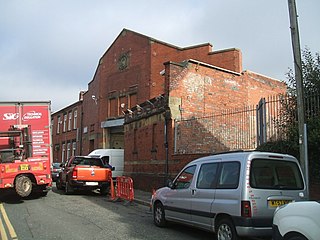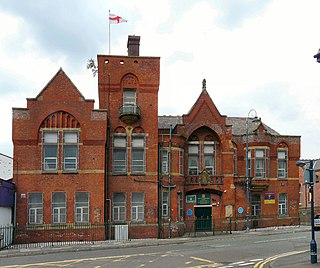
The 42nd Infantry Division was an infantry division of the British Army. The division was raised in 1908 as part of the Territorial Force (TF), originally as the East Lancashire Division, and was redesignated as the 42nd Division on 25 May 1915. It was the first TF division to be sent overseas during the First World War. The division fought at Gallipoli, in the Sinai desert and on the Western Front in France and Belgium. Disbanded after the war, it was reformed in the Territorial Army (TA), in the Second World War it served as the 42nd Infantry Division with the British Expeditionary Force (BEF) and fought in Belgium and France before being evacuated at Dunkirk. The division was later reformed in the United Kingdom and, in November 1941, was converted into the 42nd Armoured Division, which was disbanded in October 1943 without serving overseas. A 2nd Line duplicate formation, the 66th Infantry Division, was created when the Territorials were doubled in both world wars.

The Royal Fusiliers (City of London Regiment) was a line infantry regiment of the British Army in continuous existence for 283 years. It was known as the 7th Regiment of Foot until the Childers Reforms of 1881.

The Lancashire Fusiliers was a line infantry regiment of the British Army that saw distinguished service through many years and wars, including the Second Boer War, the First and Second World Wars, and had many different titles throughout its 280 years of existence. In 1968 the regiment was amalgamated with the other regiments of the Fusilier Brigade – the Royal Northumberland Fusiliers, Royal Warwickshire Fusiliers and the Royal Fusiliers – to form the current Royal Regiment of Fusiliers.

The Royal Warwickshire Regiment, previously titled the 6th Regiment of Foot, was a line infantry regiment of the British Army in continuous existence for 283 years. The regiment saw service in many conflicts and wars, including the Second Boer War and both the First and Second World Wars. On 1 May 1963, the regiment was re-titled, for the final time, as the Royal Warwickshire Fusiliers and became part of the Fusilier Brigade.

The 7th Light Mechanised Brigade Combat Team is a formation in the British Army with a direct lineage to 7th Armoured Brigade and a history that stretches back to the Napoleonic Wars. It saw active service in the Crimean War, the Second Boer War and both the First and the Second World Wars. In 2014, the 7th Armoured Brigade was re-designated as 7th Infantry Brigade, thereby ensuring that the famed "Desert Rats" continue in the British Army's Order of battle.
The 25th Division was an infantry division of the British Army, raised as part of Lord Kitchener's Third New Army (K3) in September 1914, shortly after the outbreak of the Great War. It served on the Western Front for most of the war.

Sir Lees Knowles, 1st Baronet, was a British barrister, military historian and Conservative politician.

The 125th Brigade was an infantry brigade formation of the British Army that saw active service during both the First and Second World Wars. It was assigned to the 42nd Division and served in the Middle East and later in the trenches of the Western Front in the First World War. In the Second World War the brigade, now redesignated 125th Infantry Brigade, fought in Belgium and France before being evacuated at Dunkirk and was then converted into 10th Armoured Brigade.
The 197th Brigade was an infantry brigade formation of the British Army that saw distinguished active service in both the First and Second world wars.
The 199th Brigade was an infantry brigade formation of the British Army that saw active service during the First World War as part of 66th Division. During the Second World War, it was reformed as the 199th Infantry Brigade and served with the 55th Infantry Division until August 1944 when it was redesignated as the 166th Infantry Brigade.
The 7th Battalion, Lancashire Fusiliers, was a volunteer unit of Britain's Territorial Army from 1908 until 1967. Raised in Salford, Greater Manchester, it fought as infantry at Gallipoli, in Egypt and on the Western Front during the First World War. It served as a searchlight unit during the Second World War, particularly during the 'Liverpool Blitz', and continued in an air defence role postwar.

St John's Hill Drill Hall is a military installation at Lavender Hill in London. The building on St John's Hill became the regimental headquarters for the London Regiment in 1993.

The Castle Armoury is a former military installation in Bury, Greater Manchester, England.

The Baron Street drill hall is a former military installation in Rochdale, England.

The Poyser Street drill hall is a former military installation in Wrexham, Wales.

The Back Lane drill hall is a former military installation in Newtown, Wales.

The Bath Street drill hall is a former military installation in Warrington, Cheshire.

The Old Street drill hall is a former military installation in Ashton-under-Lyne, Greater Manchester, England.
The 1st Manchester Rifles, later the 6th Battalion, Manchester Regiment, was a unit of Britain's Volunteer Force and Territorial Army recruited in and around Manchester. It served as infantry at Gallipoli, fighting with distinction at the Third Battle of Krithia, and in some of the bitterest battles on the Western Front in the First World War. After conversion into an anti-aircraft unit of the Royal Artillery between the wars, it defended Manchester, Scapa Flow and Ceylon during the Second World War and continued in the air defence role until 1955.
The 3rd Manchester Rifles, later the 7th Battalion, Manchester Regiment was a unit of Britain's Volunteers and Territorial Force raised in Manchester. It served at Gallipoli and on the Western Front in the First World War.















